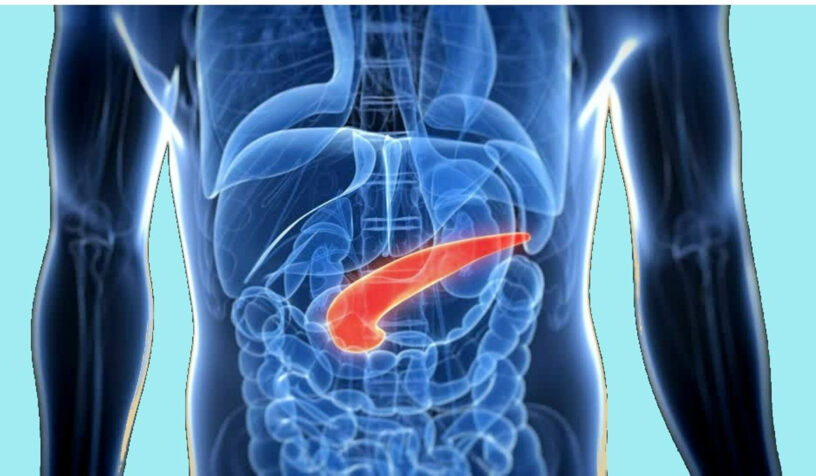The Chronic Pancreatitis Pain Market focuses on treatments and therapies aimed at managing the persistent and often debilitating pain associated with chronic pancreatitis (CP). Chronic pancreatitis is a long-standing inflammation of the pancreas that alters its normal structure and functions, often leading to severe abdominal pain, malabsorption, and diabetes. Pain management is a crucial aspect of treatment, as pain is one of the most common and challenging symptoms of chronic pancreatitis, significantly affecting the quality of life of patients.
Chronic pancreatitis pain can be severe, and managing this pain involves a variety of therapeutic approaches, including pharmacological treatments, endoscopic interventions, and surgical procedures. The goal of therapy is to reduce pain, improve pancreatic function, and prevent complications such as malnutrition and diabetes.
Key Market Drivers
- Rising Incidence of Chronic Pancreatitis:
- The increasing prevalence of risk factors such as alcohol abuse, smoking, and genetic predisposition is contributing to a rise in chronic pancreatitis cases. As the number of patients with chronic pancreatitis grows, so does the demand for effective pain management solutions.
- Advancements in Pain Management:
- Advances in pharmacological treatments, including the development of long-acting opioids, nerve block therapies, and minimally invasive procedures for pain relief, are driving market growth. These newer treatments aim to provide more effective pain relief with fewer side effects.
- Increasing Use of Minimally Invasive Procedures:
- Endoscopic interventions and nerve blocks, such as celiac plexus block, are being increasingly used for pain management in chronic pancreatitis. These procedures offer a less invasive alternative to surgery and are often effective in reducing pain.
- Rising Awareness and Diagnosis:
- Growing awareness among healthcare providers and patients about the symptoms and management of chronic pancreatitis is leading to earlier diagnosis and more proactive pain management strategies.
Market Segmentation
The chronic pancreatitis pain market can be segmented based on treatment type, end-user, and region.
1. By Treatment Type:
- Pharmacological Treatments:
- Analgesics: Painkillers such as NSAIDs, acetaminophen, and opioids are commonly used for mild to moderate pain. Opioids are reserved for severe cases but come with a risk of addiction.
- Antidepressants and Anticonvulsants: Drugs such as amitriptyline and gabapentin are sometimes used for neuropathic pain in chronic pancreatitis.
- Pancreatic Enzyme Replacement Therapy (PERT): While primarily used to improve digestion, PERT can also help reduce pain by decreasing the workload of the pancreas.
- Endoscopic Treatments:
- Procedures such as endoscopic pancreatic duct stenting or endoscopic ultrasound-guided celiac plexus block (EUS-CPB) are used to relieve ductal obstruction and manage pain.
- Surgical Procedures:
- Surgery, such as pancreatic resection or total pancreatectomy, is reserved for severe cases when other treatments fail. Surgery may help relieve pain but carries significant risks and is typically a last resort.
- Neuromodulation Therapies:
- Emerging treatments such as spinal cord stimulation (SCS) and peripheral nerve stimulation are being explored for their potential in chronic pancreatitis pain management.
2. By End-User:
- Hospitals and Clinics: The primary settings for the management of chronic pancreatitis pain, especially for patients requiring endoscopic or surgical interventions.
- Pain Management Centers: Specialized centers that provide comprehensive pain management services, including advanced pharmacological and minimally invasive treatments.
- Ambulatory Surgery Centers (ASCs): ASCs offer outpatient procedures such as nerve blocks and endoscopic interventions for pain relief.
3. By Region:
- North America: Dominates the market due to a high prevalence of chronic pancreatitis, well-developed healthcare infrastructure, and widespread availability of advanced pain management therapies.
- Europe: The second-largest market, driven by increasing healthcare awareness, advancements in pain management, and supportive healthcare policies.
- Asia-Pacific: Expected to witness significant growth due to rising incidences of chronic pancreatitis, improving healthcare infrastructure, and increasing patient awareness.
- Rest of the World: Includes Latin America, the Middle East, and Africa, where the market is slowly expanding due to growing healthcare investments.
Market Trends
- Adoption of Minimally Invasive Techniques:
- Minimally invasive procedures such as endoscopic ultrasound-guided celiac plexus block (EUS-CPB) and endoscopic drainage are becoming increasingly popular due to their effectiveness in managing pain without the need for major surgery.
- Growing Focus on Multidisciplinary Pain Management:
- There is a growing recognition that chronic pancreatitis pain requires a multidisciplinary approach, combining pharmacological treatments, lifestyle modifications, psychological support, and interventional pain management techniques.
- Emergence of Neuromodulation Therapies:
- Neuromodulation, such as spinal cord stimulation (SCS), is being studied as a potential treatment for chronic pain in pancreatitis patients. This could offer a non-pharmacological alternative for patients who are not responsive to traditional painkillers.
- Development of Long-Acting Pain Medications:
- Pharmaceutical companies are focusing on the development of long-acting opioids and other analgesics that provide prolonged pain relief with fewer doses, thereby improving patient compliance and reducing the risk of addiction.
Challenges
- Opioid Dependency and Side Effects:
- Chronic use of opioids, which are often prescribed for severe pancreatitis pain, carries risks of dependency, addiction, and side effects such as constipation and respiratory depression. This is a major concern in long-term pain management.
- Invasive Nature of Surgical Treatments:
- Surgical treatments, though effective in some cases, come with significant risks, including complications and long recovery times. These procedures are generally reserved for patients with severe, unmanageable pain.
- Underdiagnosis and Mismanagement:
- Chronic pancreatitis is often underdiagnosed or misdiagnosed, leading to delays in effective pain management. Lack of specialized care and awareness among healthcare providers can also contribute to suboptimal treatment outcomes.
- Cost of Advanced Treatments:
- The high cost of advanced pain management techniques such as endoscopic procedures, neuromodulation, and surgical interventions can limit access for patients, particularly in low-income regions.
Future Outlook
The Chronic Pancreatitis Pain Market is expected to grow steadily as awareness of the condition and its management increases. Innovations in minimally invasive procedures, neuromodulation therapies, and long-acting analgesics are likely to transform the landscape of pain management for chronic pancreatitis. The shift toward multidisciplinary care and the development of more effective, less invasive treatment options will be key drivers of future market growth. Additionally, efforts to reduce opioid dependency and improve access to advanced pain management in developing regions will shape the future of this market.
Click Here, To Get Free Sample Report https://stringentdatalytics.com/sample-request/chronic-pancreatitis-pain-market/15141/
Market Segmentations:
Global Chronic Pancreatitis Pain Market: By Company
Abbott
Aptalis Pharma
McNeil Consumer Healthcare
Sun Biopharma
Radboud University
University Medicine Greifswald
University of Albama
Global Chronic Pancreatitis Pain Market: By Type
Drugs
Research for Treating
Global Chronic Pancreatitis Pain Market: By Application
Medicinal Therapy
Surgical Therapy
Endoscopic Therapy
Global Chronic Pancreatitis Pain Market: Regional Analysis
The regional analysis of the global Chronic Pancreatitis Pain market provides insights into the market’s performance across different regions of the world. The analysis is based on recent and future trends and includes market forecast for the prediction period. The countries covered in the regional analysis of the Chronic Pancreatitis Pain market report are as follows:
North America: The North America region includes the U.S., Canada, and Mexico. The U.S. is the largest market for Cold-chain Pharma in this region, followed by Canada and Mexico. The market growth in this region is primarily driven by the presence of key market players and the increasing demand for the product.
Europe: The Europe region includes Germany, France, U.K., Russia, Italy, Spain, Turkey, Netherlands, Switzerland, Belgium, and Rest of Europe. Germany is the largest market for Cold-chain Pharma in this region, followed by the U.K. and France. The market growth in this region is driven by the increasing demand for the product in the automotive and aerospace sectors.
Asia-Pacific: The Asia-Pacific region includes Singapore, Malaysia, Australia, Thailand, Indonesia, Philippines, China, Japan, India, South Korea, and Rest of Asia-Pacific. China is the largest market for Cold-chain Pharma in this region, followed by Japan and India. The market growth in this region is driven by the increasing adoption of the product in various end-use industries, such as automotive, aerospace, and construction.
Middle East and Africa: The Middle East and Africa region includes Saudi Arabia, U.A.E, South Africa, Egypt, Israel, and Rest of Middle East and Africa. The market growth in this region is driven by the increasing demand for the product in the aerospace and defense sectors.
South America: The South America region includes Argentina, Brazil, and Rest of South America. Brazil is the largest market for Cold-chain Pharma in this region, followed by Argentina. The market growth in this region is primarily driven by the increasing demand for the product in the automotive sector.
Click Here, To Buy Premium Report https://stringentdatalytics.com/purchase/chronic-pancreatitis-pain-market/15141/?license=single
The report has helped our clients:
- To describe and forecast the Market size, on the basis of various segmentations and geography, in terms of value and volume
- To measure the changing needs of customers/industries
- To provide detailed information regarding the drivers, restraints, opportunities, and challenges influencing the growth of the Market
- To gain competitive intelligence and uncover new opportunities
- To analyse opportunities in the Market for stakeholders by identifying high-growth segments in Market
- To strategically profile key players and provide details of the current competitive landscape
- To analyse strategic approaches adopted by players in the Market, such as product launches and developments, acquisitions, collaborations, contracts, expansions, and partnerships
About Stringent Datalytics
Stringent Datalytics offers both custom and syndicated market research reports. Custom market research reports are tailored to a specific client’s needs and requirements. These reports provide unique insights into a particular industry or market segment and can help businesses make informed decisions about their strategies and operations.
Syndicated market research reports, on the other hand, are pre-existing reports that are available for purchase by multiple clients. These reports are often produced on a regular basis, such as annually or quarterly, and cover a broad range of industries and market segments. Syndicated reports provide clients with insights into industry trends, market sizes, and competitive landscapes. By offering both custom and syndicated reports, Stringent Datalytics can provide clients with a range of market research solutions that can be customized to their specific needs.
Contact Us
Stringent Datalytics
Contact No- +1 346 666 6655
Email Id- sales@stringentdatalytics.com




Leave a Reply